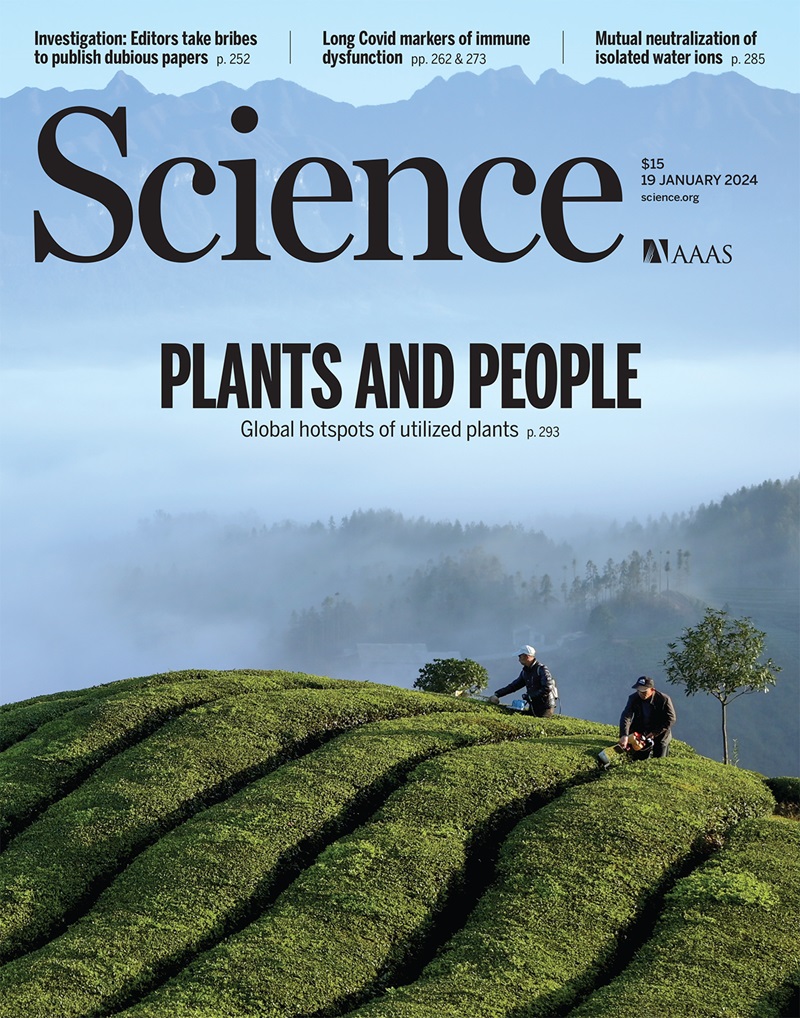超越了关节的磨损
IF 45.8
1区 综合性期刊
Q1 MULTIDISCIPLINARY SCIENCES
引用次数: 0
摘要
骨关节炎是世界上最常见的关节疾病,也是老年人慢性疼痛和残疾的主要原因。传统上,它被认为是一种由机械磨损驱动的退行性疾病(1,2)。然而,新出现的证据强调了代谢途径在骨关节炎发病机制中的作用(3,4)。例如,肥胖甚至在非负重关节中也使个体易患骨关节炎,这表明慢性代谢性炎症和脂质代谢改变——而不是单纯的机械负荷——可以驱动软骨破坏。然而,代谢和疾病进展之间联系的潜在机制仍然知之甚少,限制了开发新的治疗方法的能力。在这期杂志的第48页,Yang等人(5)报道了令人信服的证据,证明肠-关节轴涉及胆汁酸代谢和胰高血糖素样肽1 (GLP-1)信号在骨关节炎的发展过程中,促进了对骨关节炎发病机制的理解,并为治疗开辟了新的途径。本文章由计算机程序翻译,如有差异,请以英文原文为准。
Beyond wear and tear at the joint
Osteoarthritis is the most prevalent joint disorder worldwide and a leading cause of chronic pain and disability in older adults. Traditionally, it has been regarded as a degenerative disease driven by mechanical wear and tear (1, 2). However, emerging evidence highlights the role of metabolic pathways in the pathogenesis of osteoarthritis (3, 4). For instance, obesity predisposes individuals to osteoarthritis even in non–weight-bearing joints, indicating that chronic metabolic inflammation and altered lipid metabolism—rather than mechanical overload alone—can drive cartilage breakdown. However, mechanisms underlying the links between metabolism and disease progression remain poorly understood, limiting the ability to develop new therapeutic approaches. On page 48 of this issue, Yang et al. (5) report compelling evidence for a gut-joint axis involving bile acid metabolism and glucagon-like peptide 1 (GLP-1) signaling in osteoarthritis development, advancing the understanding of osteoarthritis pathogenesis and opening new avenues for therapy.
求助全文
通过发布文献求助,成功后即可免费获取论文全文。
去求助
来源期刊

Science
综合性期刊-综合性期刊
CiteScore
61.10
自引率
0.90%
发文量
0
审稿时长
2.1 months
期刊介绍:
Science is a leading outlet for scientific news, commentary, and cutting-edge research. Through its print and online incarnations, Science reaches an estimated worldwide readership of more than one million. Science’s authorship is global too, and its articles consistently rank among the world's most cited research.
Science serves as a forum for discussion of important issues related to the advancement of science by publishing material on which a consensus has been reached as well as including the presentation of minority or conflicting points of view. Accordingly, all articles published in Science—including editorials, news and comment, and book reviews—are signed and reflect the individual views of the authors and not official points of view adopted by AAAS or the institutions with which the authors are affiliated.
Science seeks to publish those papers that are most influential in their fields or across fields and that will significantly advance scientific understanding. Selected papers should present novel and broadly important data, syntheses, or concepts. They should merit recognition by the wider scientific community and general public provided by publication in Science, beyond that provided by specialty journals. Science welcomes submissions from all fields of science and from any source. The editors are committed to the prompt evaluation and publication of submitted papers while upholding high standards that support reproducibility of published research. Science is published weekly; selected papers are published online ahead of print.
 求助内容:
求助内容: 应助结果提醒方式:
应助结果提醒方式:


